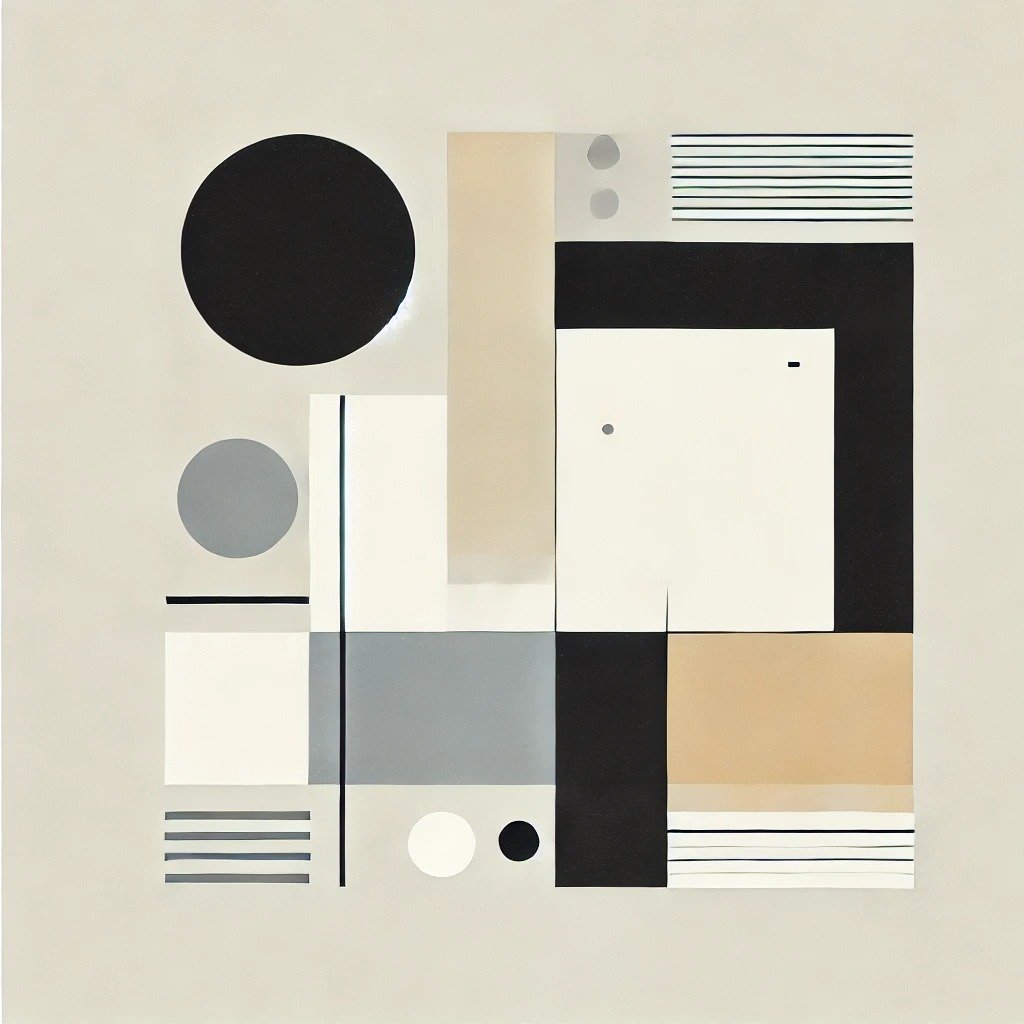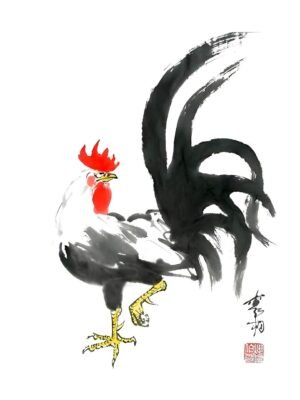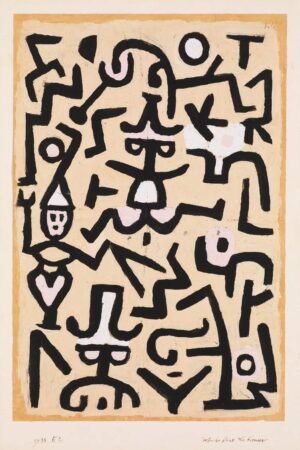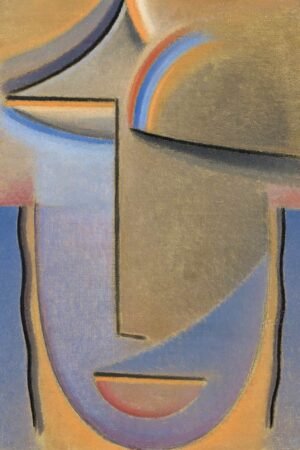Foundations and History of Minimalist Abstraction
Minimalist abstraction is an art movement that developed in the mid-20th century, especially in the 1960s. This movement stands out as a simplified form of abstract art. Focusing on the most basic elements such as color, form and texture, minimalist artists aimed to provide a visual experience rather than emotional creativity. By arguing that “less” is “more”, these artists have moved away from complexity in their works.
Minimalist abstraction may seem quite simple at first glance, but this simplicity carries a deeper meaning. Artists often use geometric forms in their works. These forms are usually characterized by clear, straight lines and avoid detail. Furthermore, another important feature of minimalist abstraction is its preference for monochrome or simple color transitions using a limited color palette.
This movement is the opposite of abstract expressionism. While abstract expressionists emphasized emotional intensity and personal expression in their art, minimalist abstractionists sought an aesthetic simplicity independent of emotions.
One of the most prominent artists of minimalist abstraction is Frank Stella. Stella is one of the pioneers of minimalist abstraction in the art world and his interest in geometric shapes has earned him a great reputation. His works are full of straight lines and sharp geometric shapes. Other important figures of minimalist abstraction include Donald Judd and Dan Flavin. These artists often worked with industrial materials.
Main Characteristics of Minimalist Abstraction
As an art movement, minimalist abstraction aims to present visual elements in their most basic form, in line with certain aesthetic and structural principles, avoiding excessive ornamentation. One of the most prominent features of this approach is the use of simple forms and a small number of different colors.
Geometric Shapes and Forms
In minimalist abstraction, geometric forms form a fundamental building block. By using simple geometric shapes such as circles, squares, rectangles, rectangles and lines, artists try to create an aesthetic simplicity rather than complex emotional expressions. These figures are usually defined by smooth and clear lines. The use of geometric shapes creates a sense of order and symmetry in the eye of the viewer, in keeping with the modernist approach. It can be said that minimalist abstraction encourages the viewer to think abstractly and perceive the visual world in a simpler way.
Color Selection and Monochromatic Approach
In minimalist abstraction, few colors are usually used. Sometimes artists create entire compositions with a single color, which increases the simplicity and intensity of the work. Monochromatic approaches are a method used to ensure that the artist conveys an emotional meaning through color. In some of Frank Stella’s works, the simple compositions he creates with monochromatic surfaces and shapes are among the best examples of minimalist abstraction.
Use of Surface and Texture
In minimalist abstraction, artists generally prefer smooth and flat surfaces. Such surfaces eliminate the textural aspect of the work, allowing the visual elements to come to the fore. In minimalist works, there is often a lack of elements such as brush strokes or traces of texture.
Donald Judd, one of the most well-known artists of minimalist abstraction, often used industrial materials such as metal and concrete in his works, emphasizing the natural textures and surfaces of these materials. This shows that the materials used in minimalist abstraction have an aesthetic significance and that the choice of materials deepens the artistic expression.
The Relationship of Minimalist Abstraction with Other Abstract Art Movements
Minimalist abstraction has gained a unique place in abstract art. This movement developed as a response to abstract expressionism and other modern art movements. Minimalism rejected traditional abstract art and especially the emotional intensity of abstract expressionism and advocated the transformation of art into a simpler and more objective form.
Abstract Expressionism and Minimalism
Abstract expressionism was a prominent art movement during the 1940s and 1950s. In this movement, artists produced works that reflected their personal feelings and inner worlds. Artists such as Jackson Pollock and Mark Rothko are among the most well-known representatives of abstract expressionism. These artists emphasized emotional intensity and spontaneity in their works and used color and form as a form of expression.
Minimalist abstraction, in contrast to abstract expressionism, avoids emotional intensity, preferring simple and flat forms. Instead of going beyond personal feelings and expression, minimalist artists emphasized objectivity and simplicity. Frank Stella stands out as one of the most important figures of this transformation. In his works, an aesthetic order is established with geometric forms and solid colors rather than an emotional meaning.
Geometric Abstraction and Minimalism
Geometric abstraction began to develop in the early 20th century, especially with the De Stijl movement. Piet Mondrian is one of the most important artists of this movement, lines and colors are used in a completely regular and symmetrical manner. Geometric abstraction is very similar to minimalism. Both movements are characterized by abstract forms and simple color palettes. However, while geometric abstraction usually involves more rigid lines and a more pronounced structural order, minimalism may have a more flexible understanding of form.
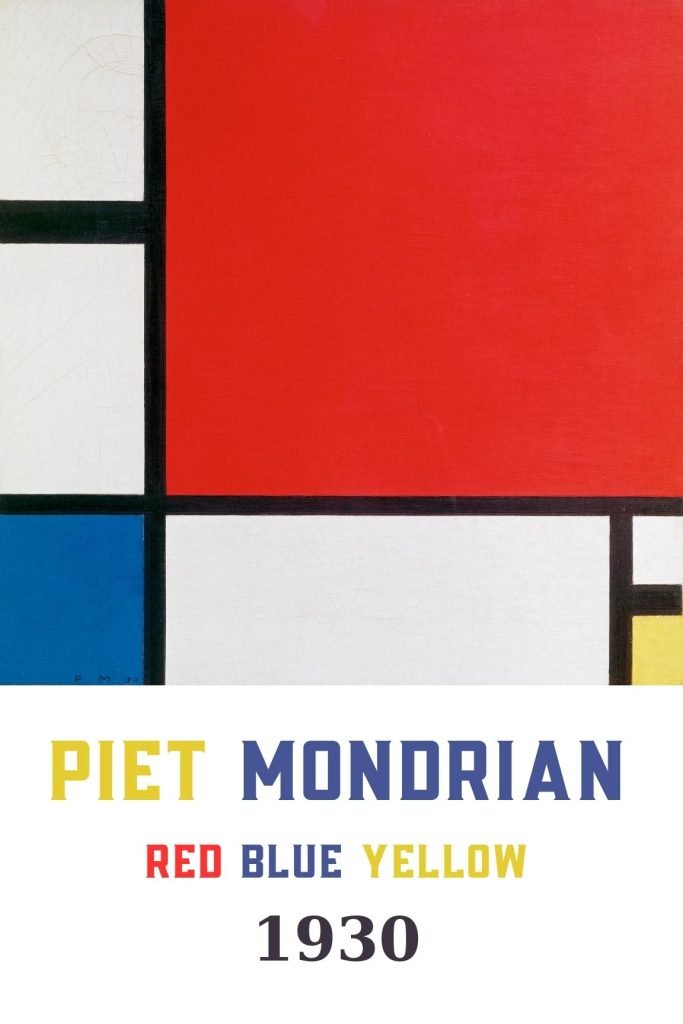
Piet Mondrian’s “Composition with Red, Blue, and Yellow” is an example of geometric abstraction close to the minimalist movement. The vertical and horizontal lines, color blocks and symmetrical structures used by Mondrian reflect the simplicity and order in minimalist abstraction.
Minimalist abstraction also interacts with conceptual art and industrial art movements. Conceptual art is a movement that emphasizes the idea behind art rather than its aesthetic value. Minimalist artists often emphasized the intellectual theme behind the art while simplifying it aesthetically. Using industrial materials, names like Donald Judd and Dan Flavin blurred the boundaries between art and life and revealed the functional aspect of their works.
For example, Dan Flavin’s works with neon lights are examples of minimalist abstraction that make art more abstract and interactive with space. Flavin’s works often work with simple geometric shapes and light, encouraging the viewer to interact with their surroundings.
Minimalist abstraction marked an important turning point in the artistic evolution of the 20th century. Bearing traces of both abstract expressionism and geometric abstraction, this movement reshaped the aesthetic dimension of art by combining a simplified understanding of form and color with modern art. Artists such as Frank Stella, Donald Judd and Piet Mondrian played an important role in the development of minimalist abstraction and shaped the current influences of this movement.
Discover Our Latest Art Prints
Explore the latest additions to our curated art collection, designed to inspire every room.
-

Chinese Rooster Art Print
Price range: 23.00$ through 139.00$ This product has multiple variants. The options may be chosen on the product page -

God Speed Art Print by Edmund Blair Leighton
Price range: 23.00$ through 209.00$ This product has multiple variants. The options may be chosen on the product page -

Paul Klee Comedians Handbill Abstract Art Print
Price range: 23.00$ through 209.00$ This product has multiple variants. The options may be chosen on the product page -

Abstract Head of woman, Evening Print Alexej von Jawlensky
Price range: 23.00$ through 209.00$ This product has multiple variants. The options may be chosen on the product page -

White Swan Floating on Dark Water Wall Art Print
Price range: 23.00$ through 209.00$ This product has multiple variants. The options may be chosen on the product page -

Black and White Sunflower Field Wall Art Print
Price range: 23.00$ through 209.00$ This product has multiple variants. The options may be chosen on the product page

